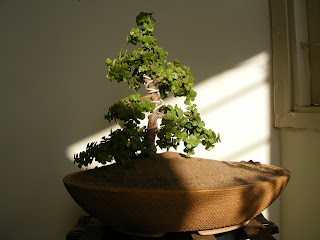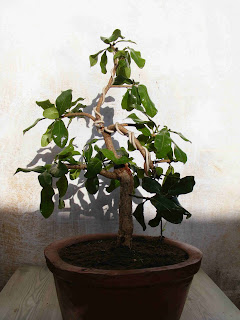Quick Links / Site Map
- - Home
- - To Buy Bonsai Tools!!!
- August 2009 Updates
- - Members Collection (New)
- - Articles, Suggestions, Experiments of Members (** NEW SECTION **)
- - Ramesh Sinha Bonsai Collection & Blog
- - Bonsai Tipe & Tutorials
- - Bonsai Training Camp
- - About Bonsai Club, Membership & Founders
- - Upcoming Events
- - Press Coverage
- - Contact Us
3rd Annual Bonsai Competition
So far we didn't had a place to conduct regular classes & as a result the we didn't intake new member last year in Ahmedabad Bonsai Club. We will now be having a regular classes at Parimal Garden from March 12 onwards, as Ahmedabad Municipal Corporation has been kind enough to give us a small place to develop is a permanent Bonsai Garden. I sincerely hope things falls in place & we can put up a good show.
We will need your support, keep showering it.
Thanks a lot.
On behalf of Ahmedabad Bonsai Club
Ramesh Sinha
All about fertilizers
Plants make food by process called Photosynthesis, where Carbon dioxide & water in presence of sunlight gets converted into Sugars & carbohydrates, and this is what plants feed on. Fertilizers are like Vitamins for plants, which aids in carrying out the various functions like growing, photosynthesis, flowering, seeding, etc.
Fertilizers are classified as
- Macro-nutrients
- Micro-nutrients or trace elements
Macro-nutrients:
These are further classified as Primary & Secondary Macro-nutrients:
- Primary Nitrogen (N), Phosphorous (P), Potassium (K)
- Secondary Calcium (Ca),
Boron (B), Chlorine (Cl), Manganese (Mn), Iron (Fe), Zinc (Zn), Copper (Cu), Molybdenum (Mo) and Selenium (Se).
To plants it makes not difference if the Fertilizer is Organic or Inorganic. All that it needs is Macronutrients & Micronutrients in the right proportion to grow. It does not care if the same is manufactured or is available as natural resource i.e cow dung, compost, manure, etc.
Solid vs Liquid Fertilizer
Plants absorb nutrients from roots or via opening in leaves. In nature, the roots play a major role in absorbing fertilizers. Remember roots do not eat soil, all it can do is absorb water & fertilizers dissolved in water. Hence it makes no difference to plant if fertilizer is available in solid or liquid form.
What Fertilizer to Buy?
Together Nitrogen, Phosphorous & Potassium is know as NPK. Composition of NPK differs as per plant requirement i.e NPK 19:19:19 or 24:19:19, etc. These rations determines as what % of element in more & in which ratio. NPK 19:19:19 means all three elements Nitrogen, Phosphorous & Potassium are in equal proportion.
Element: Use Purpose
Nitrogen Ability to produce chlorophyll & thus aids in plants growth
Phosphorous Roots development, Flowering & absorbing food
Potassium Protection against draught, cold, diseases
NPK 19:19:19 which has all nutrients in balanced proportion is recommended for Bonsai Plants. The fertilizer you buy should contain the other elements too as listed above but in very small quantities.
- Please refer instruction manual thoroughly
- Please seek usage instruction from expert if possible
- Fertilizers should be used sparingly
- They should used in small quantities, once every 2 weeks
- Preferably they should be diluted in water & than fed to the plants
- If sprayed on leaves it should be done during early morning or evening hours
- Excess usage can harm plans & even kill them
- Usage should be more in Growing season & less in dormant period
Ramesh Sinha
Ahmedabad Bonsai Club
9924332267
Join Indian Bonsai group on Facebook http://www.facebook.com/?ref=logo#!/group.php?gid=134040618089
For more information, please visit this website.
http://www.evergreengardenworks.com/fertiliz.htm
About Fertilizing Bonsai
Plants make food by process called Photosynthesis, where Carbon dioxide & water in presence of sunlight gets converted into Sugars & carbohydrates, and this is what plants feed on. Fertilizers are like Vitamins for plants, which aids in carrying out the various functions like growing, photosynthesis, flowering, seeding, etc.
Fertilizers are classified as
- Macro-nutrients
- Micro-nutrients or trace elements
Macro-nutrients:
These are further classified as Primary & Secondary Macro-nutrients:
- Primary Nitrogen (N), Phosphorous (P), Potassium (K)
- Secondary Calcium (Ca),
Boron (B), Chlorine (Cl), Manganese (Mn), Iron (Fe), Zinc (Zn), Copper (Cu), Molybdenum (Mo) and Selenium (Se).
To plants it makes not difference if the Fertilizer is Organic or Inorganic. All that it needs is Macronutrients & Micronutrients in the right proportion to grow. It does not care if the same is manufactured or is available as natural resource i.e cow dung, compost, manure, etc.
Solid vs Liquid Fertilizer
Plants absorb nutrients from roots or via opening in leaves. In nature, the roots play a major role in absorbing fertilizers. Remember roots do not eat soil, all it can do is absorb water & fertilizers dissolved in water. Hence it makes no difference to plant if fertilizer is available in solid or liquid form.
What Fertilizer to Buy?
Together Nitrogen, Phosphorous & Potassium is know as NPK. Composition of NPK differs as per plant requirement i.e NPK 19:19:19 or 24:19:19, etc. These rations determines as what % of element in more & in which ratio. NPK 19:19:19 means all three elements Nitrogen, Phosphorous & Potassium are in equal proportion.
Element: Use Purpose
Nitrogen Ability to produce chlorophyll & thus aids in plants growth
Phosphorous Roots development, Flowering & absorbing food
Potassium Protection against draught, cold, diseases
NPK 19:19:19 which has all nutrients in balanced proportion is recommended for Bonsai Plants. The fertilizer you buy should contain the other elements too as listed above but in very small quantities.
- Please refer instruction manual thoroughly
- Please seek usage instruction from expert if possible
- Fertilizers should be used sparingly
- They should used in small quantities, once every 2 weeks
- Preferably they should be diluted in water & than fed to the plants
- If sprayed on leaves it should be done during early morning or evening hours
- Excess usage can harm plans & even kill them
- Usage should be more in Growing season & less in dormant period
Ramesh Sinha
Ahmedabad Bonsai Club
9924332267
Join Indian Bonsai group on Facebook
For more information, please visit this website.
http://www.evergreengardenworks.com/fertiliz.htm












